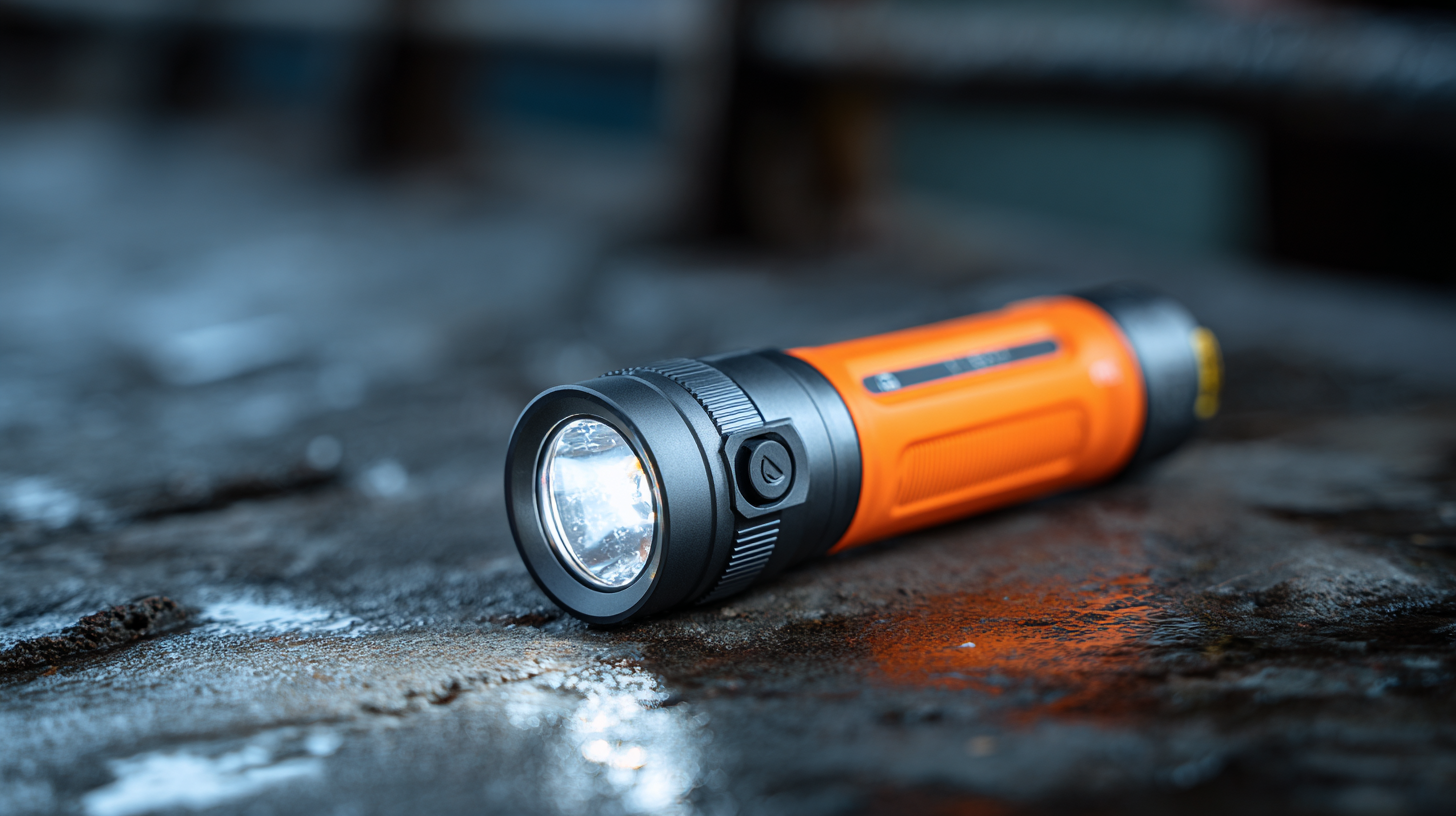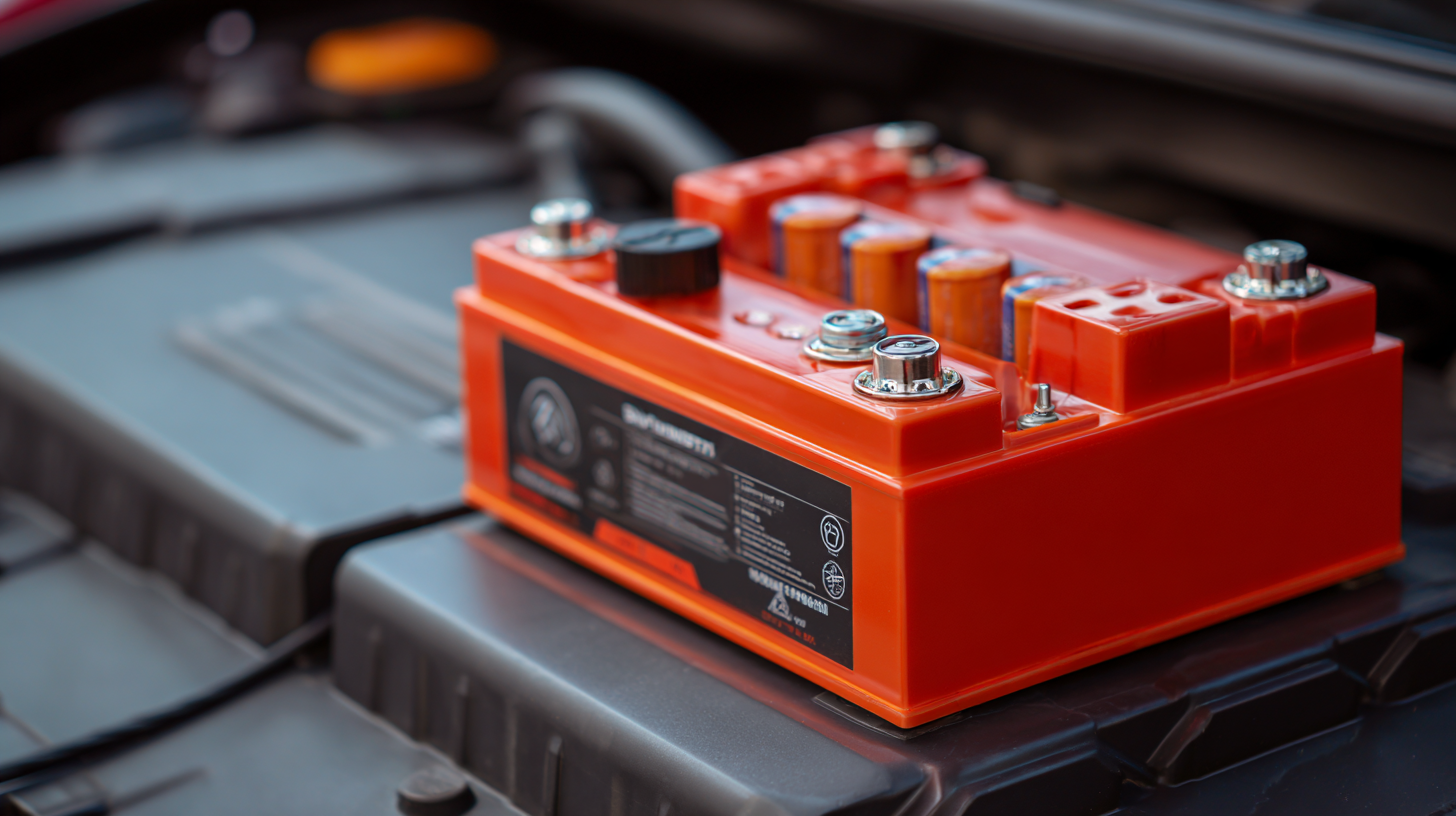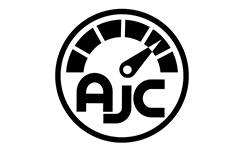Emerging Trends in Emergency Light Battery Technology at the 138th Canton Fair 2025
The 138th Canton Fair in 2025 is poised to showcase significant advancements in emergency light battery technology, a vital component in ensuring safety and reliability during power failures. Recent industry reports indicate that the global emergency lighting market is projected to reach $6.77 billion by 2026, growing at a CAGR of 7.3%. This growth is fueled by the increasing adoption of LED technology and an emphasis on sustainability. As manufacturers strive to enhance the efficiency and lifespan of emergency light batteries, innovations such as lithium-ion technology and smart battery management systems are emerging at the forefront. These advancements not only improve performance but also align with stringent environmental regulations, making emergency light batteries a key focus for industry leaders at the fair. The Canton Fair serves as an ideal platform for networking, knowledge exchange, and unveiling groundbreaking products that cater to the evolving needs of safety and emergency preparedness.

Emerging Innovations in Emergency Light Battery Technologies Showcased at Canton Fair 2025
At the 138th Canton Fair 2025, a significant spotlight was placed on emerging innovations in emergency light battery technologies, paving the way for enhanced safety solutions in various sectors. Exhibitors showcased cutting-edge battery systems that utilize lithium-ion technology, which has been reported to dominate the market with a share of approximately 57% in the portable power segment, according to a recent market analysis by Allied Market Research. This trend reflects a growing demand for energy-efficient, lightweight, and high-capacity batteries, essential for reliable emergency lighting.
One of the key innovations highlighted was the integration of smart technology within battery management systems, enabling real-time monitoring and diagnostics. This advancement is anticipated to boost the overall efficiency of emergency lighting systems, reducing maintenance costs by up to 20% as per a study by the Battery Innovation Center. Additionally, advancements in solar-charging capabilities were showcased, addressing the rising concerns over sustainability and energy independence, projected to grow by nearly 30% in the next five years. Such developments signify a shift towards a more resilient and eco-friendly approach in emergency light battery technologies.
Emerging Innovations in Emergency Light Battery Technologies at the 138th Canton Fair 2025
Key Industry Players Highlighting Sustainable Battery Solutions
At the upcoming 138th Canton Fair in 2025, the spotlight on
sustainable battery solutions
is poised to showcase the critical role industry players are taking in transforming energy storage.
The global market for electric vehicle (EV) batteries
is projected to reach USD 26.5 billion by 2030, demonstrating a
robust growth trajectory as electric mobility becomes increasingly mainstream. A significant contributor
to this growth is the emerging prominence of
lithium iron phosphate (LFP) batteries, with recycling markets
expected to expand rapidly from 2025 to 2035, driven by their rising adoption in electric vehicles.
Moreover, the second-life EV battery market is gaining attention,
offering innovative pathways to enhance sustainability while addressing energy storage needs. This sector
is estimated to unlock a remarkable USD 28.17 billion market opportunity,
underscoring the importance of repurposing batteries that have reached their initial life cycle. As industry
leaders converge at the Canton Fair, their commitment to sustainable solutions signifies a pivotal moment for
battery technology, reinforcing the notion that a diversified approach,
integrating batteries with other clean energy methods, will be essential for sustainable transport's future.
Impact of Advanced Lithium Technologies on Emergency Lighting Efficiency
At the 138th Canton Fair in 2025, the spotlight will be on the latest advancements in emergency light battery technology, particularly focusing on the impact of advanced lithium technologies. Recent reports indicate that lithium-ion batteries have revolutionized the emergency lighting sector by offering greater energy density and longer lifespans compared to traditional battery technologies. According to a report by Research and Markets, the global lithium battery market is projected to grow at a CAGR of 20.3% from 2023 to 2028, underscoring the increasing adoption of these systems in critical applications.
The efficiency of emergency lighting systems is heavily influenced by the battery technology employed. With advancements in lithium chemistries, such as lithium iron phosphate (LiFePO4), emergency lights can now achieve not only longer operation times—up to 10 hours of continuous lighting—but also faster charging capabilities. The International Energy Agency (IEA) reported that emergency lighting systems utilizing advanced lithium technologies can reduce energy consumption by as much as 30%, thus promoting sustainability in emergency response applications. The integration of these technologies reflects a significant shift towards more efficient and reliable emergency lighting solutions, setting a new standard in the industry.
Consumer Demand Trends Driving Emergency Light Battery Developments
Emerging trends in battery technology, particularly in the realm of emergency light systems, are increasingly shaped by consumer demand. The ongoing transformation in the market is evident, with a heightened focus on portable and efficient battery solutions. Consumers are now prioritizing products that not only offer better performance but also align with sustainability practices. This shift is propelling manufacturers to innovate, leading to the development of more advanced battery technologies that cater to the needs of emergency lighting applications.

The global battery management system market is expected to witness significant growth, with its value projected to soar from $11.42 billion in 2024 to an astounding $46.94 billion by 2032. This growth, driven by a CAGR of 19.32%, underscores the increasing reliance on battery-powered systems in various applications, including emergency lighting. As consumers demand increased reliability and efficiency from their emergency power sources, manufacturers are compelled to invest in research and development, resulting in more robust and versatile battery solutions tailored to today's needs.
Future Prospects: Integration of Smart Technologies in Emergency Lighting Systems
As the 138th Canton Fair in 2025 approaches, the spotlight is set to illuminate the incredible advancements in emergency light battery technology, with a particular emphasis on the integration of smart technologies. According to a recent report by Research and Markets, the global emergency lighting market is projected to reach $5.3 billion by 2026, driven largely by intelligent systems incorporating real-time monitoring and enhanced user interfaces. These innovations facilitate quicker responses in emergency situations, ultimately improving safety outcomes in both residential and commercial environments.

The incorporation of IoT (Internet of Things) into emergency lighting solutions allows for seamless communication between devices. Real-time data analytics can predict battery performance and manage energy consumption effectively, fulfilling an urgent demand for sustainable and efficient solutions. A study by Grand View Research highlights that smart emergency lighting systems are expected to witness a CAGR of 12.4% from 2021 to 2028, indicating a robust market acceptance. With this transition, not only will reliability be enhanced, but users will also benefit from smart features such as remote monitoring and automated alerts, further solidifying the role of technology in enhancing emergency preparedness and response.



